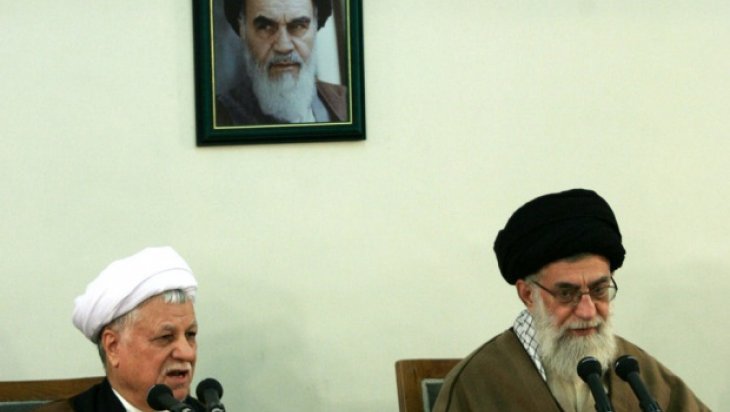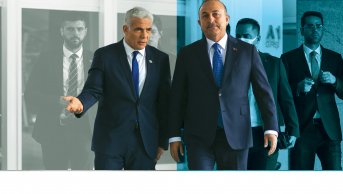Rising Terror Threat in the Cyber Space and Cyber Security

Advancements in technology and especially in the online world, on the one hand, make everyday life easier and provide new socialization channels, on the other hand new focus areas for security studies also emerge. With the advancement of technology, one of the most important problems is whether this advancement can be used for the benefit of mankind or by malicious people for their evil goals. This dilemma has existed since the early days of history for almost every advancement in the areas of military technology and security. In the current situation, in addition to earlier advancements, advancements in the online field should also be evaluated based on these two possibilities. It should be kept in mind that in the context of radicalization and terrorism, the online realms provides striking new opportunities to the individuals in the process of radicalization, to the terrorists for the preparation of terror attacks, or in the context of terrorist propaganda and financing terrorism. The Internet has become increasingly prominent since the 90s as a new front that is cheap and easy to attack, and to thoroughly defend is almost impossible and costly.
It is not difficult to foresee that, in the future the number of internet users this will increase, and that social media will become more and more influential compared to conventional means of communication also due to the attraction of the partial anonymity of the Internet all of which would intensify the war in this new front. Currently, 3 billion people are connected to the Internet in the world and 7 billion people use mobile phones, most of which are smartphones. The fact that half of the users are under the age of 25 signals that the activity in the fields of information and communication will gradually increase in the future. It is possible to perceive that this “digital generation” / “Generation D” will increasingly use information and communication technologies more intensively and effectively. In terms of radicalization and militarisation of the youth, this age distribution is of great importance since the youth is regarded as one of the most vulnerable groups. It is also important that 3 of the 5 new internet users are residing in failing or failed states and thus, these individuals can disseminate dissidence in their countries and organize both violent and non-violent protests by making use of communication and information technologies.
Cyber Crime and Financing Terrorism Online
Within the context of radicalization and terrorism, information and communication technologies are used for various purposes, including propaganda, recruitment, planning attacks, training and collecting financial resources for attacks. Regarding terrorism financing, the concepts of virtual world and transboundary cybercrime and cybercriminals are increasingly occupying the international agenda. Terrorists and cybercriminals in general have been involved in acts such as piracy and malware, capture of bank accounts, human, weapons and drug trafficking using dark web and deep web over bitcoin. It is expected that this intensive use of such measures by terrorists and cybercriminals will significantly increase in the next 5 to 10 years, and it would be very difficult to develop counter measures on a par with the speed of cybercriminals’ speed of developing new methods and evolve them when necessary.
It is possible to conduct movements of money not only via money transfers, but also by illegally acquiring documents and selling them again to their real owners and blackmailing etc. In the two quite active actors in the cyber scene, namely in Russia and China, currently 92 percent of the people and 84 percent became targets of cyber attacks respectively. In the context of cybercrime, two important recent cases showed how important consequences cybercriminal financial movements in the region could have.
Especially the cyber attack on the Bangladesh Central Bank in February 2016, in which the hackers were successful in actually getting around 10 percent of the 900 million dollars they transferred over 5 SWIFT payments and the Carbanak attack which affected a wide range of countries including Russia, China, and the US show that the possibility of attacks especially against key financial institutions and instruments needs to be carefully paid attention to. Cyber crimes are estimated to cost around 400$ to 500$ billion a year. In addition to this economic dimension, strategic targets such as satellite systems, banking systems, and national information systems also need to be protected quite carefully from a cyber security perspective.
Since terrorists gradually use social media and the internet more and more effectively the countries fighting them also need to increase their ability to use and control these tools and means. In addition to social media, the operational flexibility provided by Telegram, WhatsApp, Facebook, Twitter, and encrypted chat applications to terrorists to communicate much cheaper and much faster needs to be seriously emphasised. The states facing the challenge of terrorist use of information and communication Technologies (ICT) can also use the same means in order to obtain information on terrorist attacks in advance, accessing criminal data and storing them.
Within this context, it is clear that that regional and global cooperation will also improve the navigation capabilities of states in the cyber ocean since it is clear that due to the transboundary nature of cybercrimes, it is vital that the fight should also have a transboundary nature through regional and international cooperation. Here, it is also important for states to operate the necessary legal processes of investigation and detection and carry out meticulous examinations in advance when they request information from social media sites in the process of requesting information, and to take careful examination. Otherwise, violations can occur in several areas such as freedom of thought and expression, access to personal information, and the storage of information over periods determined by legal regulations.
Effective and Holistic Fight in the Online Realm and Problematical Areas
The cyber world while providing above mentioned advantages to terrorists, it can play an important role in facilitating a more effective struggle to produce and disseminate counter-narratives and counter-messaging by states and NGOs.
It is in this world that it is possible to disseminate a counter-narrative against ethnic, ideological and religious basis of violent extremism, reinforced by visual content or videos that can reach millions of people in a second and to make the sufferings of the people at the hands of such groups more visible. As such, it would be much cheaper, quicker and more effective than using conventional methods to prevent recruitment of new people as well as trigger the existing militants’ questioning of their mindset and the propaganda they have been subjected to.
The point that should be kept in mind is that regardless of the influence a state, group or individual possesses, their impact would be limited in this vast cyber world. Thus, the private sector (which currently controls more than 90 percent of the online world), academia, opinion leaders, NGOs, youth and women as well as states can act together. In addition to that, social media companies can also contribute to such a coordinated effort by giving further visibility to the counter-narratives and counter-messages put forward by these actors. Another fact that necessitates such a coordinated action is that already radicalized individuals are highly reactive towards the narratives and messages conveyed by the state, and NGOs and opinion leaders might have a higher potential to be more effective messengers. Because criticism about the group or its ideology coming from “enemy” could be interpreted as another open attack on the “righteous cause” by “enemy”, and might even reinforce the organization discourse. Hence, to convey the message through civil and informal channels but in an organised manner is quite important.
In addition to all these points, it is necessary to mention the significance of adopting a holistic approach acting against all forms of terrorism both in the physical world as well as in the virtual space. . For example, Twitter has blocked 78 percent of ISIS-linked accounts since September 2016 whereas only 3 percent of extreme right accounts were blocked, giving way to a major point of criticism about the narrow scope of counter-measures. Considering the extreme right which is rising rapidly in Europe and the US, it is necessary to take more effective measures needs to be taken in the coming years not only by states but also by the private sector. Because, such a one-sided approach points to a struggle with only one form of terrorism which focuses on religiously-referenced acts of terrorism which in fact, constitutes a vicious circle (and constantly feeds into each other’s mindset) with Islamophobia and extreme-right movements in the West. Thus, this approach itself plays an important role in marginalization and reinforcing terrorist organizations' narratives and propaganda.
Investigating all these sub-headings mentioned within the context of the cyber world, it is possible to predict that terrorist organizations will use the internet more effectively in the future for propaganda purposes, recruitment, carrying out attacks and financing their activities. Considering the increasing number of internet, social media and smartphone users worldwide and the age range of these users, to predict much higher levels of online activity in the future is not rocket science. Therefore, it is necessary for states fighting these groups to reinforce their endeavour by cooperating with NGOs, academia and private sector, and at the same time to refrain from the practices that would violate legal boundaries, which can strengthen the discursive grounds of terrorist groups. It has been shown that fighting not only ISIS but all the terrorist organizations with different ethnic and ideological references with a much higher ability to use the virtual space would not be possible only through military means, but a socio-economic approach would also be vital. Thus, states must devise their own cyber strategies and should endeavour to increase the capacities of both civilians and security forces in this area. Also they would need to integrate the different sectors and actors into this cyber struggle and to establish regional and international cooperation mechanisms which would adopt a holistic approach against all forms of radicalization and tackle the issue on the basis of a holistic approach to radicalization. Otherwise, it seems that fighting cyber crime can easily become an even more costly and much more energy –demanding effort in time compared to the military and socio-economic steps taken in the field.








